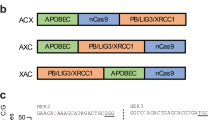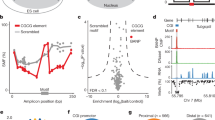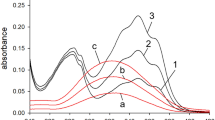Abstract
Extract: Human metaphase cells were treated sequentially with trypsin. Photographs of the cells stained before and during this treatment showed first Giemsa (G) banding then a gradual decrease in prominence of G bands and the appearance of C bands. These results were confirmed using computer-generated density curves.
Speculation: These results are more consistent with loss or change in configuration of chromosomal protein being the primary mechanism by which G and C bands are produced than denaturation-renaturation. Unless trypsin banding is carefully controlled a combination of G and C banding will be produced.
Similar content being viewed by others
Log in or create a free account to read this content
Gain free access to this article, as well as selected content from this journal and more on nature.com
or
Author information
Authors and Affiliations
Rights and permissions
About this article
Cite this article
Merrick, S., Ledley, R. & Lubs, H. Production of G and C Banding with Progressive Trypsin Treatment. Pediatr Res 7, 39–44 (1973). https://doi.org/10.1203/00006450-197301000-00006
Issue date:
DOI: https://doi.org/10.1203/00006450-197301000-00006
Keywords
This article is cited by
-
Mechanisms of chromosome banding
Chromosoma (1978)
-
Banding of human chromosomes with basic fuchsin
Human Genetics (1976)
-
Spezifische Giemsa-Färbung von heterochromatischen Chromosomensegmenten bei Vicia faba, Allium cepa und Paeonia tenuifolia
Theoretical and Applied Genetics (1976)
-
Karyotype and chromosomal banding pattern in Heteropeza pygmaea
Chromosoma (1975)
-
Cytological differentiation of constitutive heterochromatin
Chromosoma (1974)



